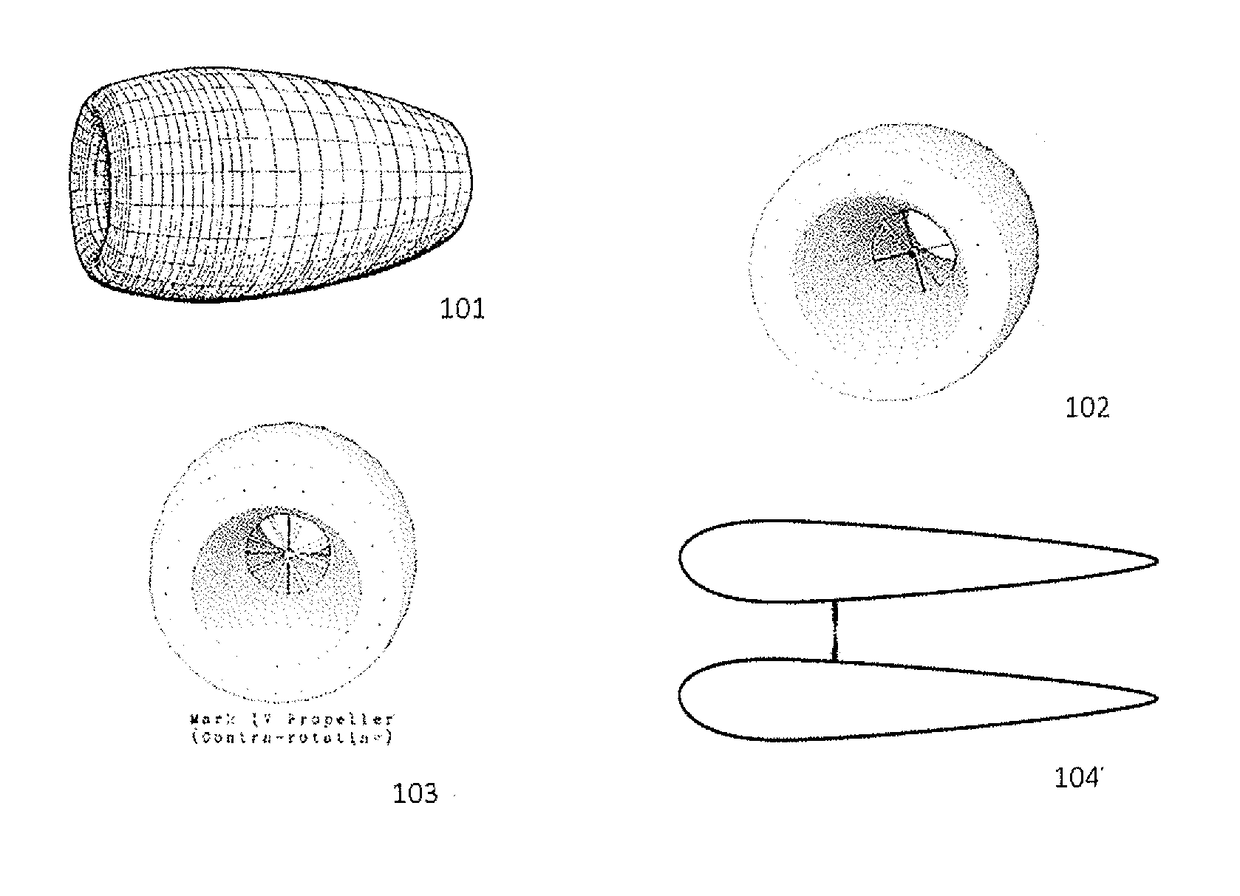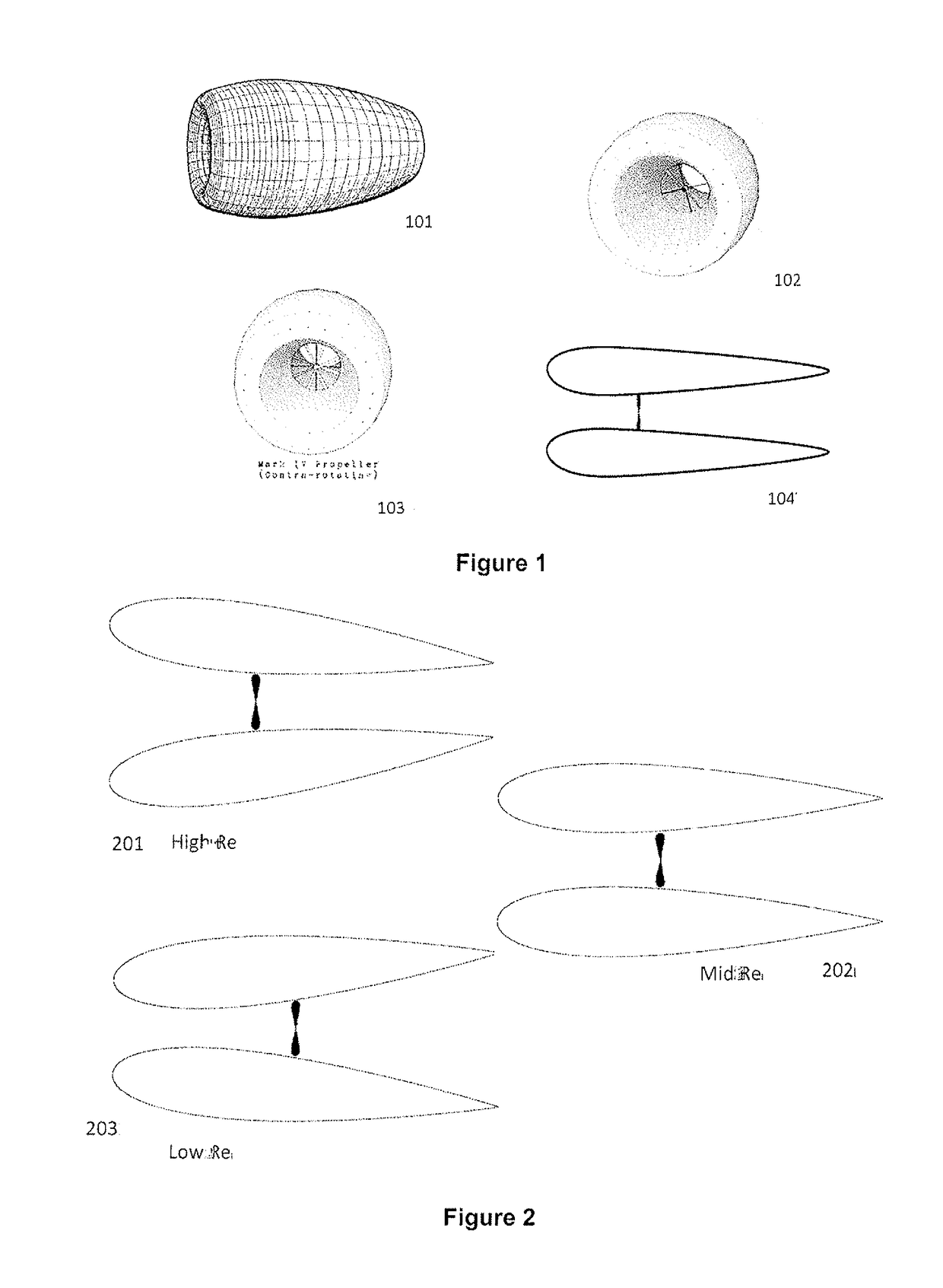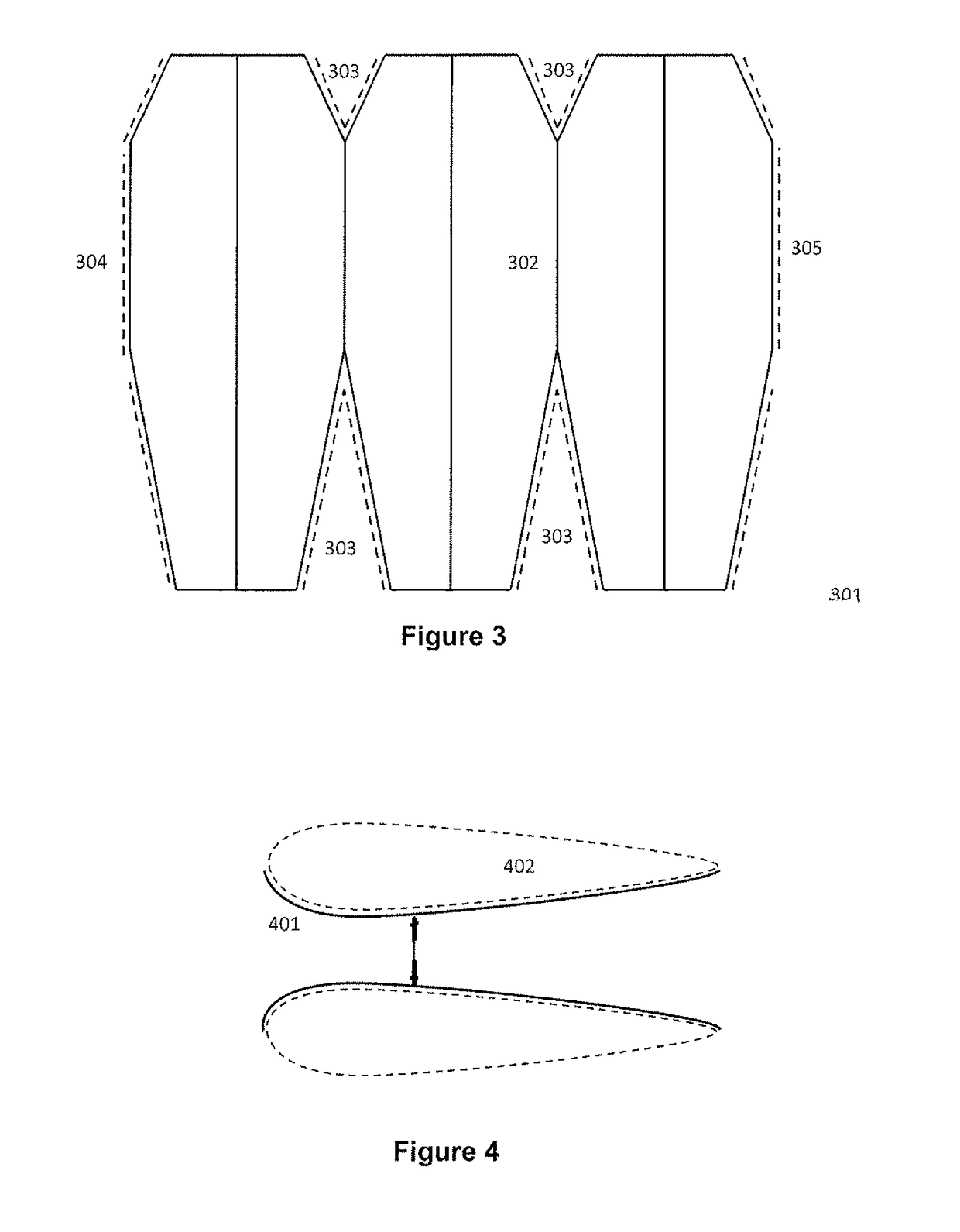An improved airship
a technology of airships and airframes, applied in the direction of rigid airships, lighter-than-air aircraft, aircrafts, etc., can solve the problems of frequent accidents, difficult air and ground manoeuvre, and airships that cannot compete with modern heavier-than-air craft, so as to reduce both skin and form drag, reduce overall power, and save energy
- Summary
- Abstract
- Description
- Claims
- Application Information
AI Technical Summary
Benefits of technology
Problems solved by technology
Method used
Image
Examples
first embodiment
[0109
[0110]The first embodiment of my invention concerns a streamlined airship with a large central duct, shaped in the form of an annular aerofoil to minimise overall drag.
[0111]FIG. 104. is a side view illustrating the general shape in cross section. The ‘sides’ of the airship are chosen to have the streamlined cross section of an aerofoil.
[0112]Within the duct is an engine, such as a propeller. A propeller has many advantages in this configuration, as it may operate more efficiently due to the reduced tip turbulence from operating within a ‘shroud’, and benefit from the increased airflow of the large forward opening. Additionally, as airships generally operate at lower speeds than aircraft, a larger, slower, but more efficient propeller may be used, and may be designed to provide thrust along its entire length (as opposed to traditional propellers which ‘flatten out’ near their tips to reduce turbulence).
[0113]Finally, the front of the airship will concentrate air into the centra...
PUM
 Login to View More
Login to View More Abstract
Description
Claims
Application Information
 Login to View More
Login to View More - R&D
- Intellectual Property
- Life Sciences
- Materials
- Tech Scout
- Unparalleled Data Quality
- Higher Quality Content
- 60% Fewer Hallucinations
Browse by: Latest US Patents, China's latest patents, Technical Efficacy Thesaurus, Application Domain, Technology Topic, Popular Technical Reports.
© 2025 PatSnap. All rights reserved.Legal|Privacy policy|Modern Slavery Act Transparency Statement|Sitemap|About US| Contact US: help@patsnap.com



